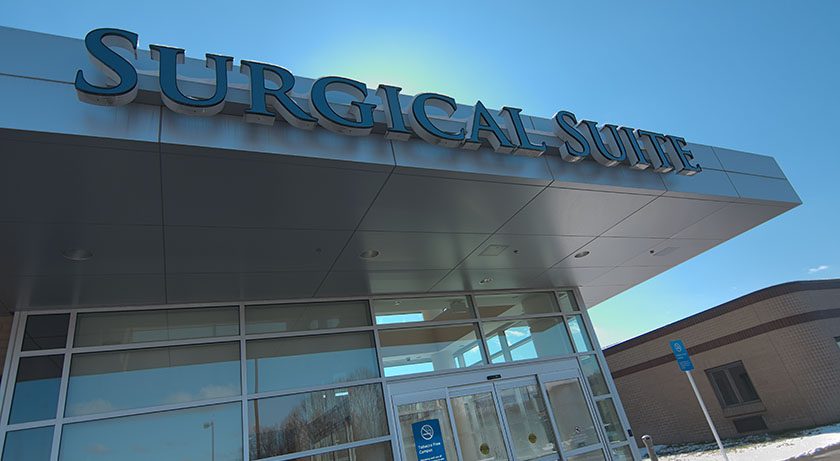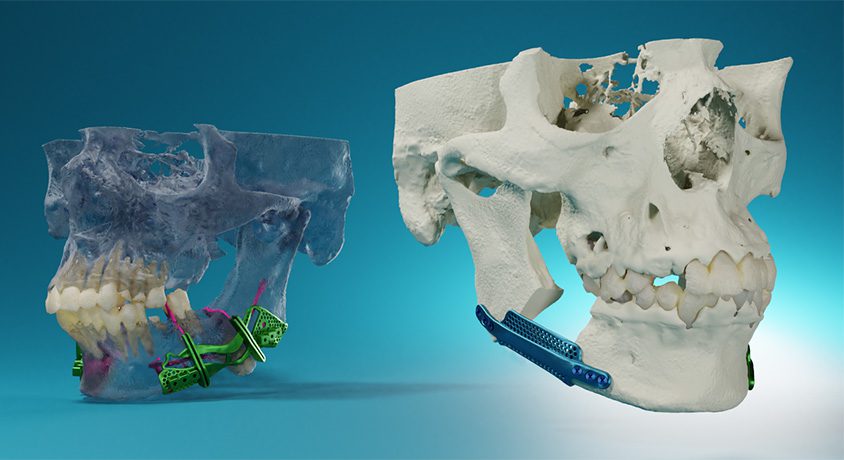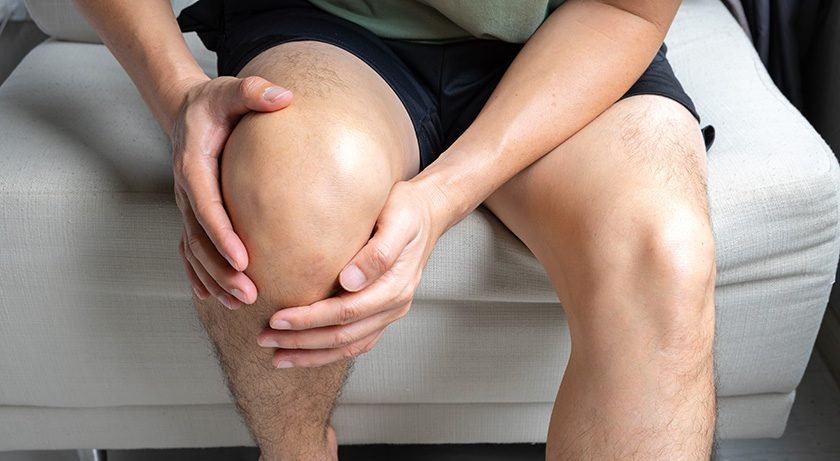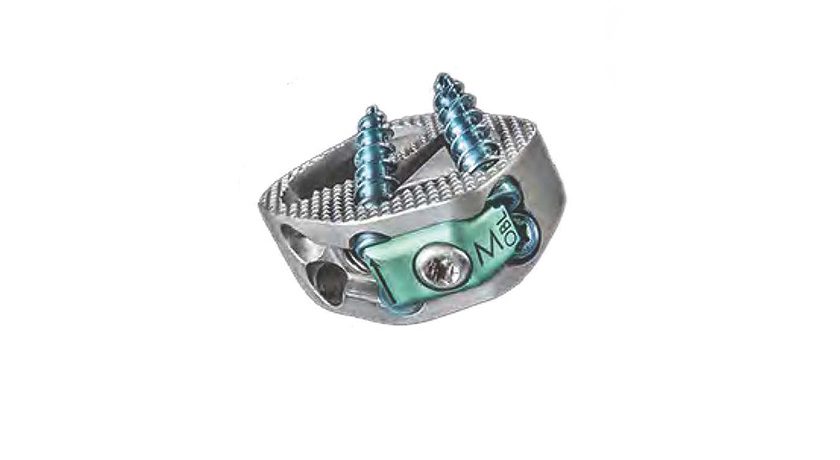

 Copy to clipboard
Copy to clipboard 
Orthopedic surgeons’ behavior is one of many drivers shifting procedures from hospitals to ambulatory surgery centers (ASCs). ASCs give surgeons autonomy, allowing them to retain a financial stake in the business, manage their caseload and choose the technology they want to use to treat patients. As more surgeons navigate the complexities of establishing and expanding ASCs, there’s a greater opportunity to care for orthopedic patients in these settings.
“Physicians own 90% of the free-standing ASCs in the market,” said Allen Passerallo, VP, Category Management – Orthopedics at Vizient. “The ASC might have minority ownership by a hospital or private equity firm, but the majority of owners are physicians, and all parties are interested in maintaining their facility’s profitability.”
Achieving that profitability requires strong business acumen and industry partnerships.
Orthopedic strategics have begun to capitalize on the market by extending their portfolios beyond the O.R. to include practice management services and ASC construction and financing opportunities.
Vizient’s latest response to this market shift is the introduction of a first-of-its-kind sourcing program that assists surgeon owners with supply chain costs and complexities, and affords orthopedic companies deeper access to the ASC market. The initiative is modeled after the company’s success helping hospitals and vendors with contracting strategies, and it serves as an example of the evolving opportunities the ASC market will open for industry in the years ahead.
According to Sg2, a Vizient company, orthopedic outpatient procedures are projected to grow by more than 24% over the next ten years. Growth in total hip and knee replacement is expected to reach nearly 30%, and total shoulder replacement is expected to surpass 50%. Further, the growth of outpatient cervical and lumbar spine procedures is expected to reach the low teens.
An ASC’s financial viability often depends on performing a high number of procedures. A total hip or knee replacement takes significantly longer than well-established outpatient procedures like hernia repair or tonsillectomy; therefore, fewer are performed in a day. Orthopedic ASCs need to have a strong understanding of their case mix and ensure that their services are profitable to rationalize the investment in orthopedic-specific equipment and personnel.
“There’s a high demand for more complicated procedures to be performed in the outpatient setting,” Passerallo said. “Freestanding ASCs are reimbursed at a lower rate than hospital-owned facilities, and payors continue to push back on reimbursement models. Operational costs are also higher for orthopedics than for other procedures. These factors lead to ASCs facing margin compression challenges just like any other company. They’re looking for ways to improve their profitability.”
Passerallo used the example that, historically, ASCs have accommodated shorter surgeries that might involve a single disposable device. A joint replacement can demand seven to 10 instrument trays that need to be sterilized. Most ASCs weren’t built for sterilization, so the facility needs to either outsource the process or bring it in-house and manage the overhead costs.
“ASCs are looking for relief in operational costs,” Passerallo said, “and we think our program is a unique idea to improve their financial well-being.”
Passerallo said Vizient’s program focuses on the quality of products and services from the vendor community and ensures that participating ASCs have access to the right products and technologies and the number of suppliers they need.
ASCs participating in the program are required to commit a portion of their implant spending to the companies and products under contract as well as participate in a committed number of categories. A benefit to ASCs is that the program aggregates spend across ASCs into a single price point. ASCs that buy $100,000 in implants will pay the same price as facilities that spend $2 million.
Passerallo said the negotiated contract is a risk-sharing model and is enticing for orthopedic companies because it introduces them to a new customer base and ensures the ASCs adhere to their commitments in the agreement.
The program’s first contracts began in April for knee, hip and bone replacement. Vizient plans to roll out seven additional contracts by June and expand its product categories to include spine, total shoulder replacement, trauma, arthroscopy, orthobiologics and neurostimulation.
“There’s a lot of focus and discussion around hip and knee,” Passerallo said. “We started there because it’s a larger spend category and considered one of the more challenging areas to create contract agreements.”
Passerallo noted that feedback on the program has been positive, especially from ASC owners who often feel that they don’t have pricing leverage due to their small amount of spending.
“We surveyed ASC owners, and the data shows that if they could save 15% or more, their physicians would change implants for the sake of lowering their cost structure,” he said. “This program accomplishes that through ensuring that we’re staying focused on clinical quality, technology availability and service levels by the supplier, but also ensuring that there’s a commitment and compliance to this program by the ASCs so that suppliers get value out of it as well.”
Orthopedic surgeons’ behavior is one of many drivers shifting procedures from hospitals to ambulatory surgery centers (ASCs). ASCs give surgeons autonomy, allowing them to retain a financial stake in the business, manage their caseload and choose the technology they want to use to treat patients. As more surgeons navigate the complexities of...
Orthopedic surgeons’ behavior is one of many drivers shifting procedures from hospitals to ambulatory surgery centers (ASCs). ASCs give surgeons autonomy, allowing them to retain a financial stake in the business, manage their caseload and choose the technology they want to use to treat patients. As more surgeons navigate the complexities of establishing and expanding ASCs, there’s a greater opportunity to care for orthopedic patients in these settings.
“Physicians own 90% of the free-standing ASCs in the market,” said Allen Passerallo, VP, Category Management – Orthopedics at Vizient. “The ASC might have minority ownership by a hospital or private equity firm, but the majority of owners are physicians, and all parties are interested in maintaining their facility’s profitability.”
Achieving that profitability requires strong business acumen and industry partnerships.
Orthopedic strategics have begun to capitalize on the market by extending their portfolios beyond the O.R. to include practice management services and ASC construction and financing opportunities.
Vizient’s latest response to this market shift is the introduction of a first-of-its-kind sourcing program that assists surgeon owners with supply chain costs and complexities, and affords orthopedic companies deeper access to the ASC market. The initiative is modeled after the company’s success helping hospitals and vendors with contracting strategies, and it serves as an example of the evolving opportunities the ASC market will open for industry in the years ahead.
According to Sg2, a Vizient company, orthopedic outpatient procedures are projected to grow by more than 24% over the next ten years. Growth in total hip and knee replacement is expected to reach nearly 30%, and total shoulder replacement is expected to surpass 50%. Further, the growth of outpatient cervical and lumbar spine procedures is expected to reach the low teens.
An ASC’s financial viability often depends on performing a high number of procedures. A total hip or knee replacement takes significantly longer than well-established outpatient procedures like hernia repair or tonsillectomy; therefore, fewer are performed in a day. Orthopedic ASCs need to have a strong understanding of their case mix and ensure that their services are profitable to rationalize the investment in orthopedic-specific equipment and personnel.
“There’s a high demand for more complicated procedures to be performed in the outpatient setting,” Passerallo said. “Freestanding ASCs are reimbursed at a lower rate than hospital-owned facilities, and payors continue to push back on reimbursement models. Operational costs are also higher for orthopedics than for other procedures. These factors lead to ASCs facing margin compression challenges just like any other company. They’re looking for ways to improve their profitability.”
Passerallo used the example that, historically, ASCs have accommodated shorter surgeries that might involve a single disposable device. A joint replacement can demand seven to 10 instrument trays that need to be sterilized. Most ASCs weren’t built for sterilization, so the facility needs to either outsource the process or bring it in-house and manage the overhead costs.
“ASCs are looking for relief in operational costs,” Passerallo said, “and we think our program is a unique idea to improve their financial well-being.”
Passerallo said Vizient’s program focuses on the quality of products and services from the vendor community and ensures that participating ASCs have access to the right products and technologies and the number of suppliers they need.
ASCs participating in the program are required to commit a portion of their implant spending to the companies and products under contract as well as participate in a committed number of categories. A benefit to ASCs is that the program aggregates spend across ASCs into a single price point. ASCs that buy $100,000 in implants will pay the same price as facilities that spend $2 million.
Passerallo said the negotiated contract is a risk-sharing model and is enticing for orthopedic companies because it introduces them to a new customer base and ensures the ASCs adhere to their commitments in the agreement.
The program’s first contracts began in April for knee, hip and bone replacement. Vizient plans to roll out seven additional contracts by June and expand its product categories to include spine, total shoulder replacement, trauma, arthroscopy, orthobiologics and neurostimulation.
“There’s a lot of focus and discussion around hip and knee,” Passerallo said. “We started there because it’s a larger spend category and considered one of the more challenging areas to create contract agreements.”
Passerallo noted that feedback on the program has been positive, especially from ASC owners who often feel that they don’t have pricing leverage due to their small amount of spending.
“We surveyed ASC owners, and the data shows that if they could save 15% or more, their physicians would change implants for the sake of lowering their cost structure,” he said. “This program accomplishes that through ensuring that we’re staying focused on clinical quality, technology availability and service levels by the supplier, but also ensuring that there’s a commitment and compliance to this program by the ASCs so that suppliers get value out of it as well.”

You are out of free articles for this month
Subscribe as a Guest for $0 and unlock a total of 5 articles per month.
You are out of five articles for this month
Subscribe as an Executive Member for access to unlimited articles, THE ORTHOPAEDIC INDUSTRY ANNUAL REPORT and more.
CL
Carolyn LaWell is ORTHOWORLD's Chief Content Officer. She joined ORTHOWORLD in 2012 to oversee its editorial and industry education. She previously served in editor roles at B2B magazines and newspapers.







